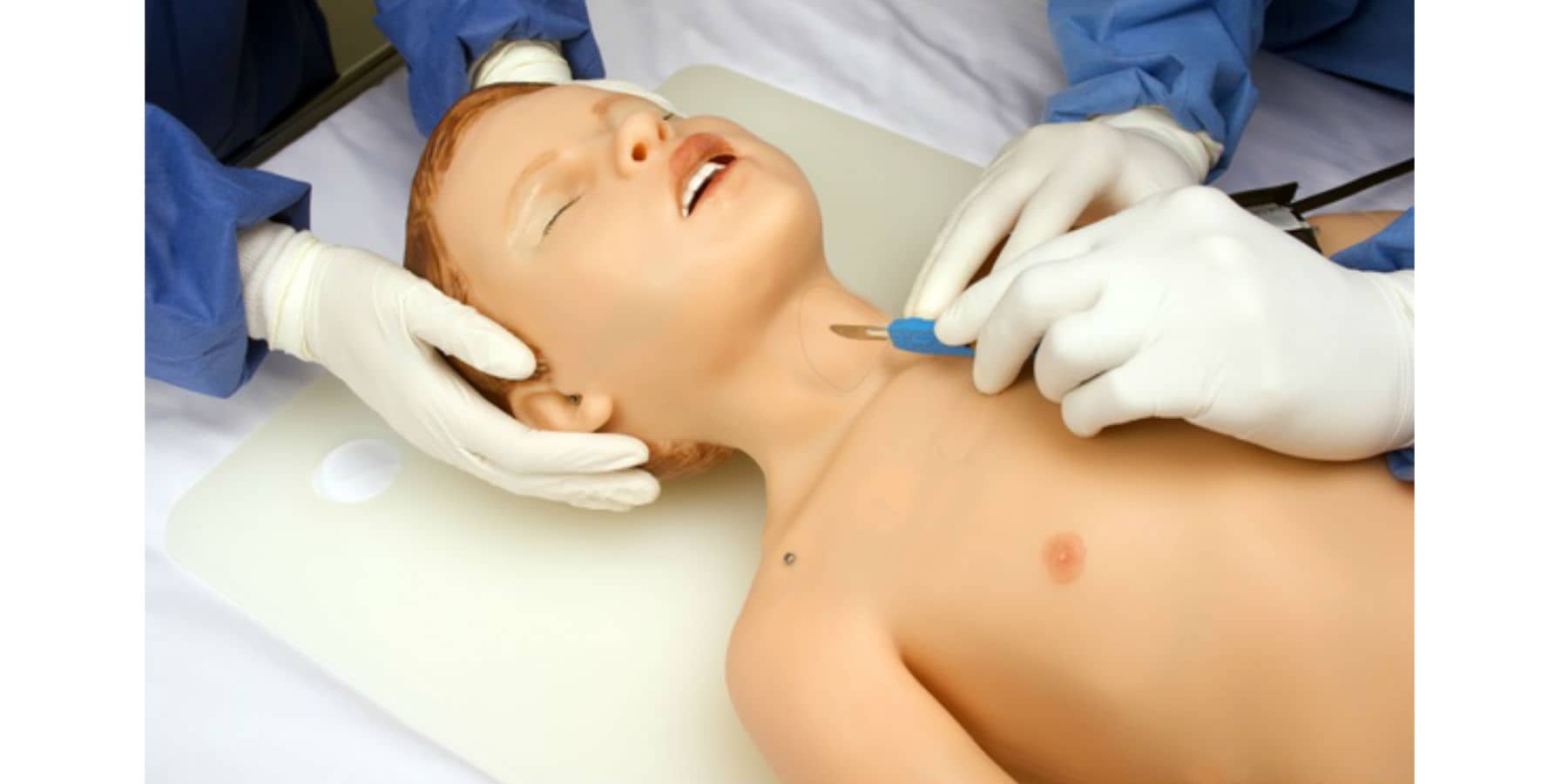Medicine and education are the two areas which have adopted the field of AI more openly as compared to others. The two fields are brought together in the form of humanoid robots which will serve as a valuable learning tool. One such example is Pediatric HAL. It is a hyper-realistic AI-supported pediatric patient simulator. US-based company Gaumard developed the robot; the company creates simulators that cover every aspect of healthcare education. The young patient is the most advanced simulator in the world. It produces a dynamic range of facial expressions which provide the pediatricians with real-time and real-life training. The training also involves dealing with unhappy patients. Most exciting part is that the HAL robot can even bleed.
The patient robot is only 112cm tall and includes presets which reflect nine different emotional and physical states. These states are being angry, quizzical, yawning, anxious, worried, amazed, crying, ongoing pain, and transient pain. Some of the most critical aspects of HAL are as follows:
- Pediatrics can monitor the vitals of HAL using defibrillation, SpO2, capnography, NIBP, live pacing, and EKG.
- Since it is wireless, therefore there are no limitations regarding where and in which real-life medical situation it can be used.
- Complete emergency room procedures like tracheotomies and chest tube insertions can also be performed on the robot.
- All operations can be controlled using a combined tablet PC and UNI interface for facilitators.
- Total of 10 specially designed simulation learning experiences can be set up to create new scenarios to offer real-life experience.
- Changes in skin color and eye movement that shows emotional and physical state.
- The robot is available in three colors so that it can be made available all over the world for practicing medicine.
Meet Pediatric HAL S2225, the most advanced #wireless #tetherless #pediatric #patient simulator & the first designed to help students & clinicians learn how to recognize anxiety, pain & other symptoms through lifelike dynamic expressions, movement & speech https://t.co/1nO4nvkMzH
— Gaumard Scientific (@GaumardInFocus) January 16, 2018
Young patients all over the world give unique physical, emotional, and psychological challenges to healthcare specialists. This simulator is helping to address some of these challenges and train the professionals to deal with them in real life later on. Dr. Rakshay Shetty shared his views about the robot and said that the robot, “allows the learner to experience a real-life scenario in a risk-free environment, reflect on the experience through feedback and structured debriefing, understand the concepts more clearly and experiment[,] practice in a safe environment[, and work] at his/her pace. Simulation sessions may help the novice progress up the learning curve faster and acquire the essential technical and nontechnical skills in preparation for real-life.” Based on this philosophy, HAL is one of the most advanced creations of patient simulation which is currently available in the medical field.


